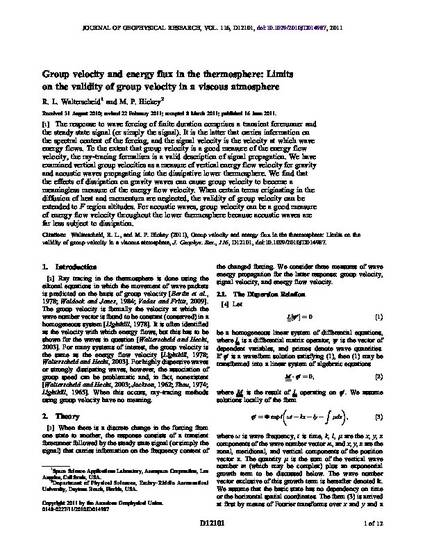
The response to wave forcing of finite duration comprises a transient forerunner and the steady state signal (or simply the signal). It is the latter that carries information on the spectral content of the forcing, and the signal velocity is the velocity at which wave energy flows. To the extent that group velocity is a good measure of the energy flow velocity, the ray‐tracing formalism is a valid description of signal propagation. We have examined vertical group velocities as a measure of vertical energy flow velocity for gravity and acoustic waves propagating into the dissipative lower thermosphere. We find that the effects of dissipation on gravity waves can cause group velocity to become a meaningless measure of the energy flow velocity. When certain terms originating in the diffusion of heat and momentum are neglected, the validity of group velocity can be extended to F region altitudes. For acoustic waves, group velocity can be a good measure of energy flow velocity throughout the lower thermosphere because acoustic waves are far less subject to dissipation.
